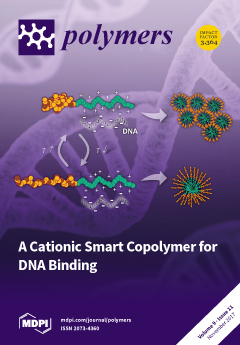Open AccessArticle
Selective Adsorption of Ag+ on a New Cyanuric-Thiosemicarbazide Chelating Resin with High Capacity from Acid Solutions
by
Guo Lin 1,2,3,4, Shixing Wang 1,2,3,4,*, Libo Zhang 1,2,3,4,*, Tu Hu 1,2,3,4, Jinhui Peng 1,2,3,4, Song Cheng 1,2,3,4 and Likang Fu 1,2,3,4
1
State Key Laboratory of Complex Nonferrous Metal Resources Clean Utilization, Kunming University of Science and Technology, Kunming 650093, China
2
Faculty of Metallurgical and Energy Engineering, Kunming University of Science and Technology, Kunming 650093, China
3
Key Laboratory of Unconventional Metallurgy, Ministry of Education, Kunming 650093, China
4
National Local Joint Laboratory of Engineering Application of Microwave Energy and Equipment Technology, Kunming 650093, China
Cited by 39 | Viewed by 4445
Abstract
A new cyanuric-thiosemicarbazid (TSC-CC) chelating resin was synthesized and employed to selectively adsorb Ag
+ from acid solutions. The effects of acid concentration, initial concentration of Ag
+, contact time and coexisting ions were investigated. The optimal acid concentration was 0.5 mol/L.
[...] Read more.
A new cyanuric-thiosemicarbazid (TSC-CC) chelating resin was synthesized and employed to selectively adsorb Ag
+ from acid solutions. The effects of acid concentration, initial concentration of Ag
+, contact time and coexisting ions were investigated. The optimal acid concentration was 0.5 mol/L. The adsorption capacity of Ag
+ reached 872.63 mg/g at acid concentration of 0.5 mol/L. The adsorption isotherm was fitted well with the Langmuir isotherm model and the kinetic data preferably followed the pseudo-second order model. The chelating resin showed a good selectivity for the Ag
+ adsorption from acid solutions. Fourier transform infrared (FT-IR), X-ray diffraction (XRD), Scanning electron microscopy/energy dispersive spectrometer (SEM-EDS) and X-ray photoelectron spectroscopy (XPS) were used to study the adsorption mechanism. The chelating and ionic interaction was mainly adsorption mechanism. The adsorbent presents a great potential in selective recovery Ag
+ from acid solutions due to the advantage of high adsorption capacity and adapting strongly acidic condition. The recyclability indicated that the (TSC-CC) resin had a good stability and can be recycled as a promising agent for removal of Ag
+.
Full article
►▼
Show Figures






